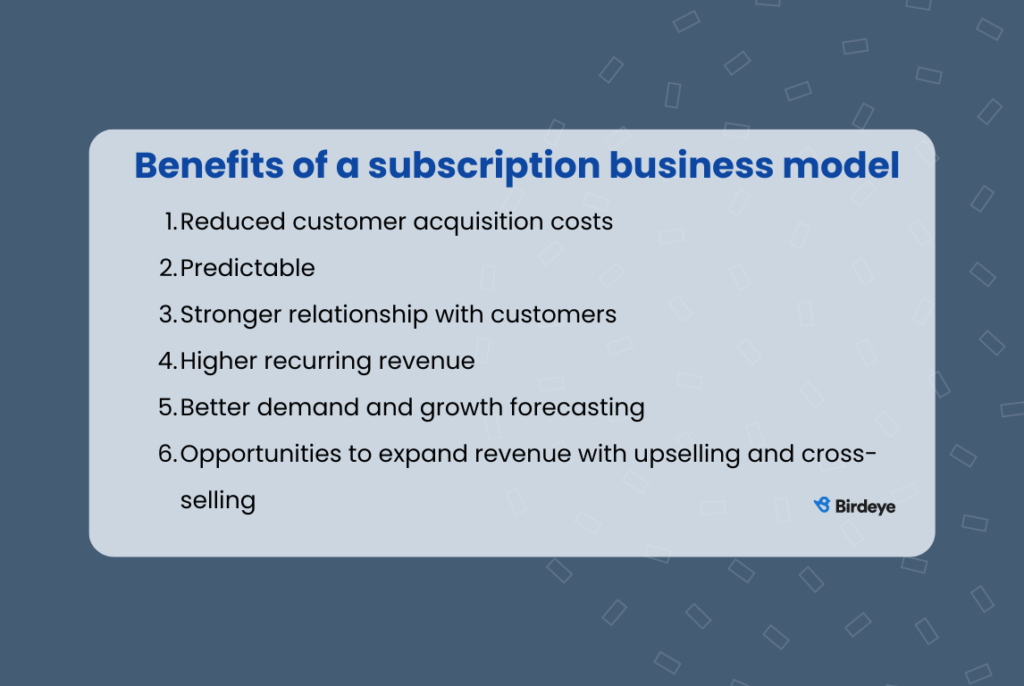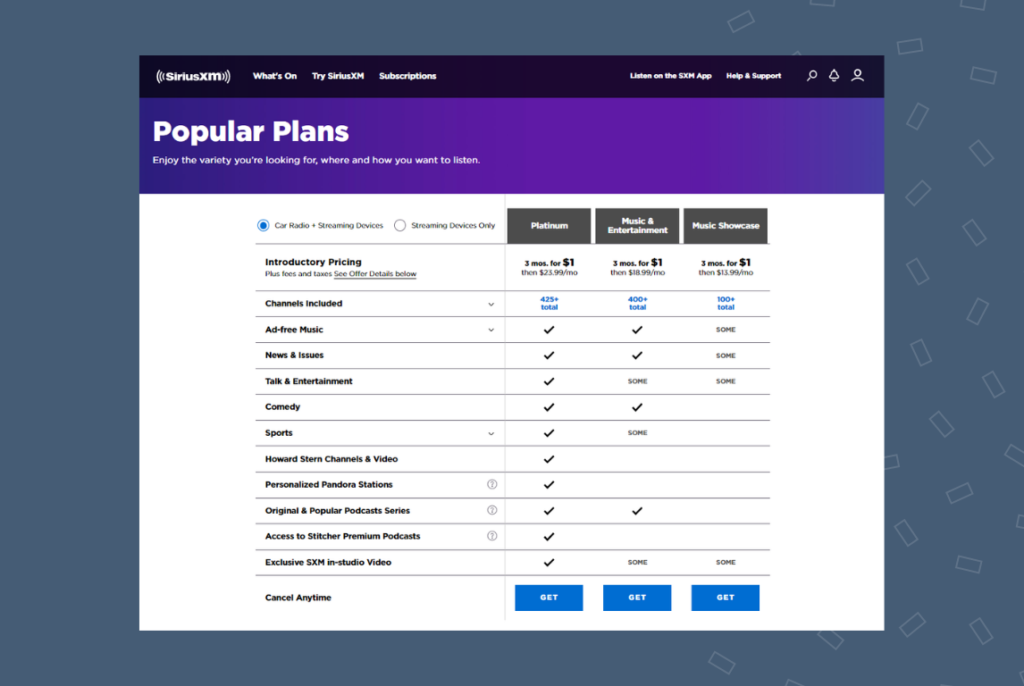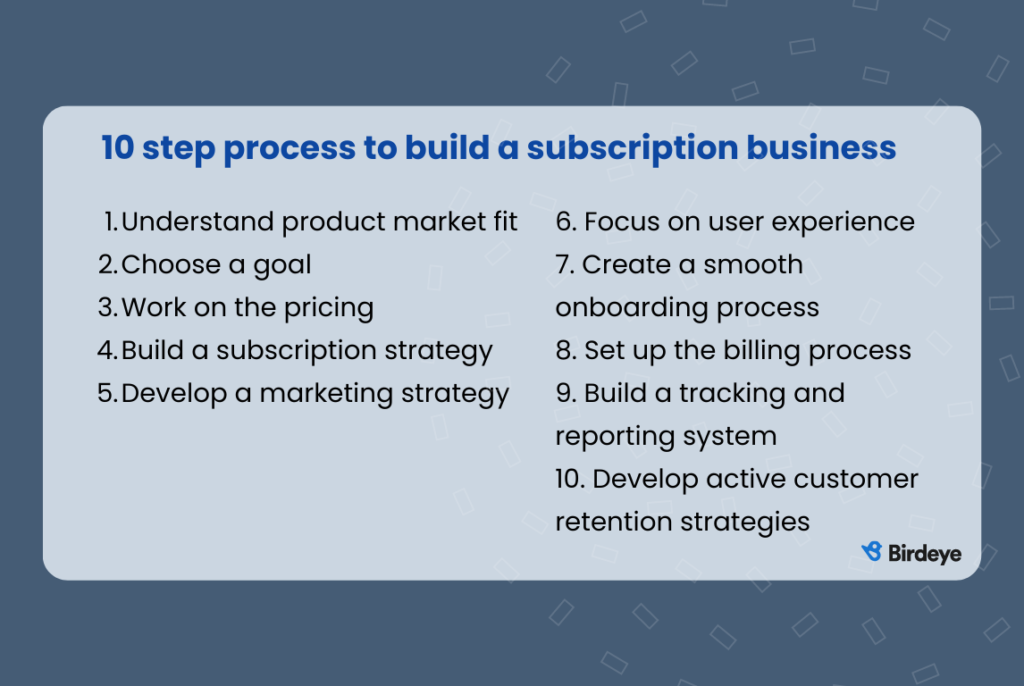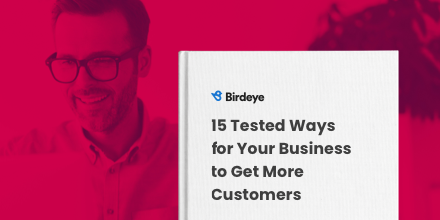Today more companies across industries are leveraging subscription business models to build successful, scalable, and sustainable enterprises. Recent statistics reveal the subscription economy will be a trillion-dollar economy by 2025. Another study indicates that 75% of organizations that sell directly to consumers will offer subscription services by 2023.
This article explores the world of subscription business models, including its benefits and tips for building one.
Table of contents
- Introduction to the subscription business model
- Popular types of subscription models
- How to build a subscription model
- Tips for building a successful subscription business model
- Key metrics to track for your subscription business
- Frequently asked questions about subscription business model
- Key Takeaways
Introduction to the subscription business model
The subscription business model has systematically changed how companies do business and has revolutionized several industries. This model offers convenience for the business and the consumer. It allows companies to leverage customer relationships to create a steady revenue stream. It also enables customers to automatically and conveniently repurchase a product or service they want to continue using.
Let’s explore how subscription models work and how to build one for your new company.
What is a subscription business model?
A subscription business model is a type of revenue system in which customers pay on a regular basis in order to receive a product or service. The fees can be on a weekly, monthly, or yearly basis. The customer can choose an evergreen plan that auto-renews each time indefinitely unless the customer explicitly cancels it. Customers can also select termed plans requiring renewal after a certain period.
How do subscriptions work?
In a subscription model, the business charges customers regularly for a product or service they are using ongoing. The customer chooses the duration and frequency of the offer with an option to renew or cancel at any time. Subscriptions are essentially contracts where the customer agrees to pay for a specific service or product over time. Conversely, the business commits to fulfill the offer as long as the customer makes payments.
Is the subscription model sustainable? – 6 benefits of the model
A subscription-based revenue model is highly sustainable and benefits both the customer and the business. The customer enjoys the unmatched convenience of automatically repurchasing a product or service they need in the future. And the business gets opportunities to retain existing customers for a longer period.
A subscription business model is also a great way for a business owner to navigate difficult times that may bring low sales and profits.
Let’s explore some of the benefits of a subscription-based business model:

Reduces customer acquisition costs
Subscription-based business models generally have a higher return than traditional business models.
For example, in 2007, the mean number of times people saw movies in the theater was 4.8 times per year. The average ticket cost was about $7. That’s about $35 per year per moviegoer. Netflix, a subscription-based model, costs about $10 per month for the basic subscription without ads. That comes to $120 per year, and it’s estimated that subscribers stay an average of 4 years.
Netflix, and its subscription model, have a higher lifetime value with their customers. As a result, Netflix doesn’t have to continue spending to acquire the same customer over and over, like a movie theater.
Predictable revenue
Accurately predicting revenue and related cash flows is important for a business to draw up its budget for the period. This is often hard to do as market conditions are constantly fluctuating. However, with subscriptions and past recoded revenue data, you can easily predict business revenue based on your product or service’s current number of subscribers. Customers have already signed contracts, making it easy to know when they will make payment and the approximate amounts.
This helps you gain accurate insights into your company’s earning potential, even in the most uncertain times.
A stronger relationship with customers
Another crucial benefit of this model is that it allows you to nurture stronger relationships with your existing customers. Since customers are paying for extended periods, you get many opportunities to engage them and build stronger connections. You can turn existing customers into brand loyalists by providing excellent customer service and using personalized engagement strategies.
Higher recurring revenue
Businesses love recurring revenues because of the financial security they bring in. With a good product and exceptional customer service, businesses can make sure that customers stay longer.
With a large chunk of their customer base staying in, subscription businesses clock higher recurring revenue than other business models.
Better demand and growth forecasting
Predicting the future is difficult for most businesses. It involves historical data analysis to understand the short and long-term cycles. You also need customer acquisition data to predict future demand and growth.
Subscription business models often provide better demand and growth forecasting abilities. Subscription business models usually have a stronger handle on customer acquisition channels, consumer behavior, and work with their loyal customers to understand demand patterns.
This allows them to stay ahead of the market and thrive in a competitive environment.
If you are an eCommerce business dealing with high demand fluctuations, subscriptions can help you forecast your demands and inventory accurately.
Opportunities to expand revenue with upselling and cross-selling
There are several avenues for expansion with subscriptions, including cross-selling and up-selling new features and additional products. Once you have secured a customer for the basic plan, you can prove the product or service’s value and make them want more.
Ultimately, you can nudge customers to upgrade to a higher plan with higher revenues. You get additional revenue from your existing customers without the extra acquisition costs.
Popular types of subscription models
You can customize the subscription business model for almost every industry. It is flexible and provides various options for business owners leveraging this model.
If you are wondering how to adapt the subscription model to your business, here are a few popular models to explore.
Box subscription business model
A subscription box business model charges customers recurring payments in exchange for a regularly delivered box of curated products or physical goods. This can be on a daily, weekly, monthly, quarterly, or yearly basis.. Subscription boxes cover many products, from essentials and luxury goods to collector’s items and pet supplies.
Examples: LootCrate, BarkBox & BirchBox

Streaming subscription business model
Streaming services grant members access to television, movies, and music for a specified period, starting from a month. This model allows consumers full access to a range of entertainment content they need whenever and wherever they want.
Examples: Hulu, Netflix & XM Satellite Radio

Foodservice subscription service
A food service subscription model is great for spicing up one’s dining routine. It is a highly popular service in the busy cosmopolitan world. Some services deliver food to a customer’s doorstep and provide recipe instructions. Other services provide fully-cooked meals delivered at specific times for their customers.
Examples: Factor, HelloFresh & SnackNation

Health and wellness subscription service
Health and wellness subscription services provide consumers access to classes, trainers, skin care, therapy, and more for a monthly fee. Most of these services offer online or app-based services, allowing customers to engage virtually from anywhere. Whether counting calories and working out or exploring online therapy, these subscription models make it easy and convenient to stay healthy.
Examples: Yoga International, Therabox & Ipsy

Software as a solution (SaaS) subscription business model
SaaS subscriptions allow consumers to purchase online software services and lease cloud-based applications regularly. The user can access the service over the Internet anytime and from anywhere. Most software companies leverage subscription models since they continuously update and improve their services. This allows them to make improvements without hindering customer experience.
Examples: Zoom, Loom & WebFlow
Publication subscription service
With a publication subscription service, the company delivers its publications to a consumer daily, weekly, or monthly rather than selling them as a stand-alone product where a customer makes a one-time purchase. This is a popular business model among leading publications.
Examples: The New York Times digital & Forbes digital subscriptions.
How to build a subscription model

The subscription business model’s success has been well-documented over the past few years. Recent research by Zuora reveals more than 70% of adults across 12 countries have purchased subscription services in the last 12 months.
Here is a step-by-step process to help you build a subscription business from scratch.
Understand product market fit
The first step to building a subscription revenue model is determining whether your business would benefit from offering subscriptions. Find out whether your customers need ongoing access to your products and services. A subscription service is only ideal for businesses specializing in products and services that the customers need continuously.
Choose a goal
The next step is to choose a clear business goal. A subscription model will impact the goal you choose. Most businesses with a subscription model will focus on their number of subscribers. A business goal usually starts at some point in the future and then works backward to achieve short-term goals.
Related read: The ultimate guide to writing a business plan
Work on the pricing
Once you have determined your business goals, choose an ideal subscription model pricing strategy. To price your subscription, consider the cost of the items you sell and other expenses, such as advertising and marketing.
You should also consider overhead costs, including shipping and fulfillment. Ensure that your pricing and the subsequent margin are as per industry standards.
Build a subscription strategy
Develop a strategy for your subscription model that provides a roadmap for everything, from concepts to execution and renewals. Your strategy should outline goals and describe processes to initiate, maintain, and monitor your service.
Start by documenting each step of the process for your first subscription sale, and then use that knowledge to create a scalable plan for growth. This will ensure that your service is sustainable in the long run.
Develop a marketing strategy
A great marketing strategy helps you attract and sustain your subscribers and meet your goals. The first step to developing an ideal marketing strategy is to know your customers and their journey. This helps you to correctly segment your target audience, identify the stages or touchpoints in your sales process and understand what makes you stand out from the competition.
The next step involves providing custom offerings tailored to customers’ preferences. This may involve offering a free trial or samples alongside full-featured products.
Focus on user experience
Signing up for a subscription service package should be easy, affordable, and convenient. Make it effortless for customers to sign up once they get to your website and social channels.
Some of the effective ways to improve user experience and get more sign-ups include:
- Make your call to action obvious: Make sure your CTA is differentiated from the rest of your page. Use contrasting colors, large font, and prominent positioning for best results.
- Simplify your sign-up form: Customers hate filling out long forms during sign-ups. Make yours as easy and as simple as possible.
- FAQs: Dispel customer objections by providing transparent FAQs about your subscriptions, including ease of customization and cancellation.
Create a smooth onboarding experience
The onboarding process you choose should suit the type of product you are selling. The onboarding process aims to help new users get acquainted with your product’s features. The specific flow of the onboarding process should be informed by each user’s specific needs.
Some of the effective onboarding steps to consider include:
- Welcome email: Use a welcome email as your first correspondence with your new customer. Send a positive email and congratulate them on their new purchase. Thank them for choosing you over other options, and let them know how excited you are to have them on board.
- Greeting message: Consider sending a greeting message to your new customers besides a welcome email. A greeting message is an in-app welcome that greets new users on their first login and guides them to take the first step in setting up their account. It is best practice to include a video to guide them.
- Product setup: Offer a guided tutorial to take your customers through the setup process one step at a time. Make the tutorial short and optional.
- Feature call-out: Use a banner to guide users around products and call out any crucial feature they should know about.
Set up the billing process
Once you have determined your pricing and designed your packages, the next step is to create an ideal billing system. Make sure your billing system processes recurring payments efficiently. Locate your payment gateway prominently on your website or app to make it easy for your customers to renew and change billing preferences.
Build a tracking and reporting system
As you try scaling your subscription business, you must have an excellent grasp of your strengths to maximize them as you grow. When doing reviews, past financial trends help guide future plans. You can utilize the reporting function of your recurring payment software to understand your strengths and weaknesses, including seasonal trends and cancellations.
Develop active customer retention strategies
You will likely retain more customers with a solid and lasting customer relationship. It is crucial, therefore, to develop active customer retention strategies to grow your venture and increase your profits. Some of the effective customer retention strategies to consider include:
- Offer omnichannel customer support.
- Respond to customer support queries quickly.
- Personalize support interactions.
- Incentivize loyalty with renewal discounts and special offers for existing customers.
Tips for building a successful subscription business model
Building a successful subscription business model requires planning and great organizational skills. It also needs some insider tips to help you avoid any surprises. Take a look at what popular subscription businesses do to succeed.
Monitor churn closely
Churn refers to customers canceling their subscriptions. It is vital that you monitor and analyze voluntary churn to continually enhance your services and improve customer retention among higher-valued clients. Collect feedback from customers and conduct period internal audits to monitor churn.
Choose the right subscription model
One of the most critical steps to building a successful business is to decide the type of subscription model your business will use and the products you will offer. The business model you choose should pave the way for the growth and success of the company. Apart from your products, other factors to keep in mind when choosing the suitable subscription model include:
- The customer: Strive to add value to the overall customer experience and purchasing patterns by prioritizing their needs.
- Value proposition: This is your brand’s promise to provide tangible benefits to customers. Find out how your model will help solve the potential customer’s problem.
- Costs: Determine the costs that will go into your subscription service. There will be upfront fixed costs. There will be variable costs. Ensure you have enough money to keep the business operating while building subscribers. Some subscription-based businesses offer a slight discount for customers that pay upfront and annually instead of monthly. This provides earlier cash flow that can be used for costs that come later in the service.
Be conservative on pricing in the beginning
Initially, adopt a conservative pricing strategy to attract and retain more subscribers. Lower prices help you generate demand and interest in the service, leading to higher sales and easier market penetration. You can reevaluate the pricing as the company grows.
Employ freemium models
A freemium model is a pricing strategy that allows companies to offer their products and services for free, expecting a percentage of those users to upgrade to a paid subscription. Employing a freemium subscription model can be a great way to acquire new customers. This model helps generate traffic, increasing the likelihood of some users upgrading to premium.
Focus on delivering value
Creating customer value increases customer satisfaction and experience. It also helps increase loyalty, market share, and efficiency. Deliver value to your customers by providing great products and customer service. Be honest and transparent and listen carefully to your customers to determine how best to deliver solutions that meet their needs.
Key metrics to track for your subscription business
Once you have built your subscription business, knowing if you are on the right track can be challenging. The day-to-day business activity rush does not allow one to track every sale. But you can understand the health of your business by tracking a few key performance indicators (KPIs).
Some of the important KPIs to track include:
Monthly recurring revenue (MRR)
This refers to the monthly revenue your company would receive from active subscriptions. If you run a yearly, weekly, or quarterly pricing model, normalize it for each to get your monthly recurring revenue. . This number should grow over time. MRR provides a more holistic view of the business revenue, including upfront payments and subscriptions.
Annual recurring revenue (ARR)
ARR is similar to MRR. However, it is calculated for a year instead of a month. ARR measures company performance/growth in a year and helps set the right goals for the coming years.
Average revenue per user (ARPU)
To get your ARPU, divide the revenue made during a specified period by the number of paying customers for that period. ARPU helps determine whether your marketing is effective and whether your budget generates expected revenue.
Customer lifetime value (CLV)
Customer lifetime value (CLV) reflects the amount a customer spends with you from when they sign up to when they exit. CLV helps measure the total income a business can expect from a typical customer for the active period..
Customer acquisition cost (CAC)
Customer acquisition cost reflects the money you spend to gain a new customer. Your CAC is a key metric helping improve your marketing and sales efforts. It helps you analyze your sales journey while providing valuable insights into potential inefficiencies within your sales funnel.
Churn rate
The churn rate or attrition rate refers to the rate at which consumers stop doing business with a company. The churn rate gives you an indication of the effectiveness of your marketing and product strategies.. It helps you determine the strategies to improve customer retention and reduce churn.
Renewal rate
The renewal rate is the percentage of consumers who renew contracts at the end of their subscription period. Measuring your renewal rate helps forecast how much revenue to expect in future weeks, months, and years.
Frequently asked questions about subscription business model
Subscription business models benefit most companies by offering convenience and improving buyer retention.
Subscription pricing models help make revenue more predictable. It also guarantees lower CAC, increased customer loyalty, and better growth forecasting.
The subscription model allows companies to lock customers into purchasing over time. It ensures a recurring revenue stream.
While an LLC isn’t a requirement to create an online subscription business, it is highly recommended, considering its protections and benefits.
Amazon has subscription services, including Prime, tailored to specific customer needs. They provide shipping and delivery benefits and online shopping discounts.
Key Takeaways
The subscription-based business models offer many advantages for the business and customers alike. With a subscription service, the customer can expect consistency both in the service and the price they are paying. The business benefits from consistent cash flow that makes it easier to predict future revenue while also benefiting from better lifetime value per customer.
Subscription-based businesses often focus on continual improvement of their service as well. They can focus on adding additional benefits so they can offer higher-priced tiers as a way to increase revenue. They can focus on improving the customer experience as a way to improve loyalty and lifetime value.

Originally published









